| Inventory Number: | IN/14-62-01 / IN-74-01 | | County: | Perry County / Spencer County | | Township: | Anderson - Harrison | | Town/Village: | Huffman | | Bridge Name: | Huffman Mill | | Crosses: | Anderson River | | Truss type: | Burr | | Spans: | 1 | | Length: | 136' floor, 156' roofline | | Roadway Width: | | | Built: | 1864 | | Builder: | William T. Washer | | When Lost: | standing | | Cause: | | | Latitude: | N38 06.240 | | Longitude: | W086 46.628 | | See a map of the area
Topographic map of the area | | Directions: | At Huffman on a bypassed section of Huffman Mill Rd. |
|
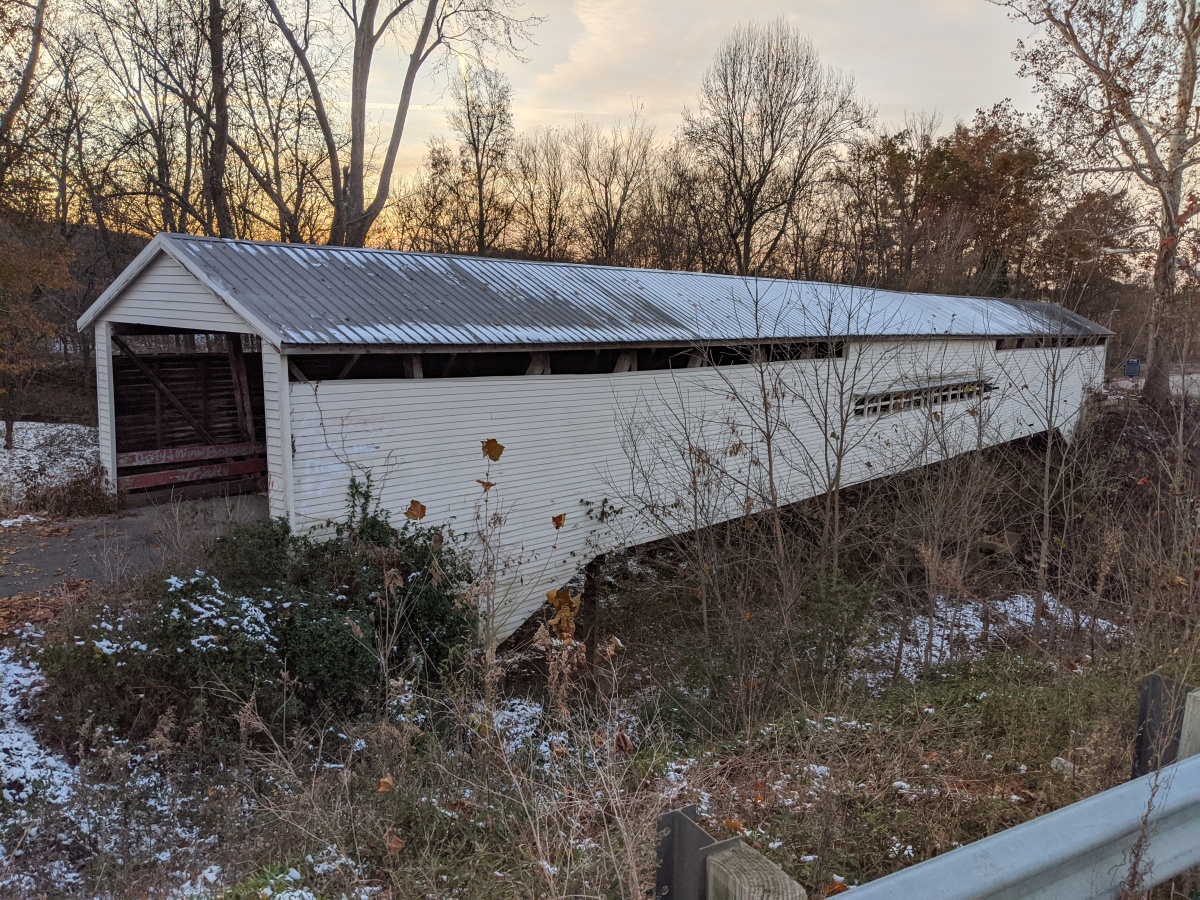
Huffman Mill Bridge, Anderson-Harrison, Perry & Spencer Counties, IN Built 1864
Bill & Jenn Caswell Photo, November 13, 2019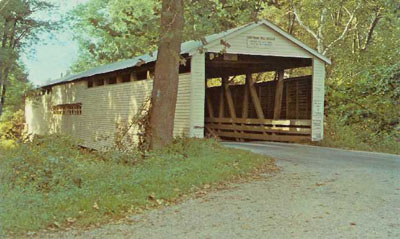
Huffman Mill Bridge, Anderson-Harrison, Perry & Spencer Counties, IN Built 1864
Richard Donovan / Trish Kane Collection
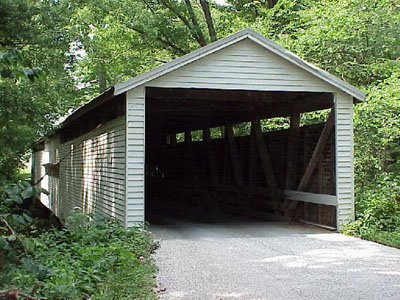
Huffman Mill Bridge, Anderson-Harrison, Perry & Spencer Counties, IN Built 1864
Dale J. Travis Photo
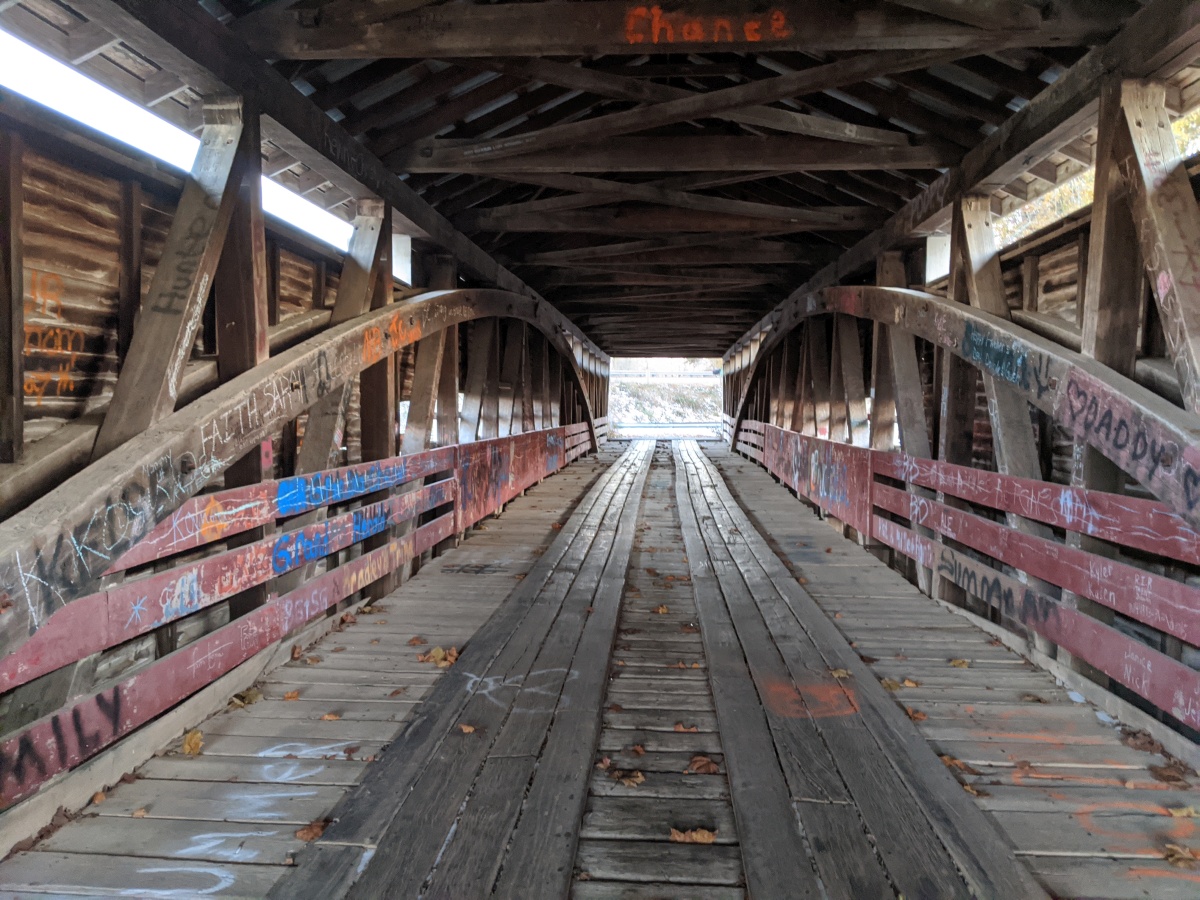
Huffman Mill Bridge, Anderson-Harrison, Perry & Spencer Counties, IN Built 1864
Bill & Jenn Caswell Photo, November 13, 2019
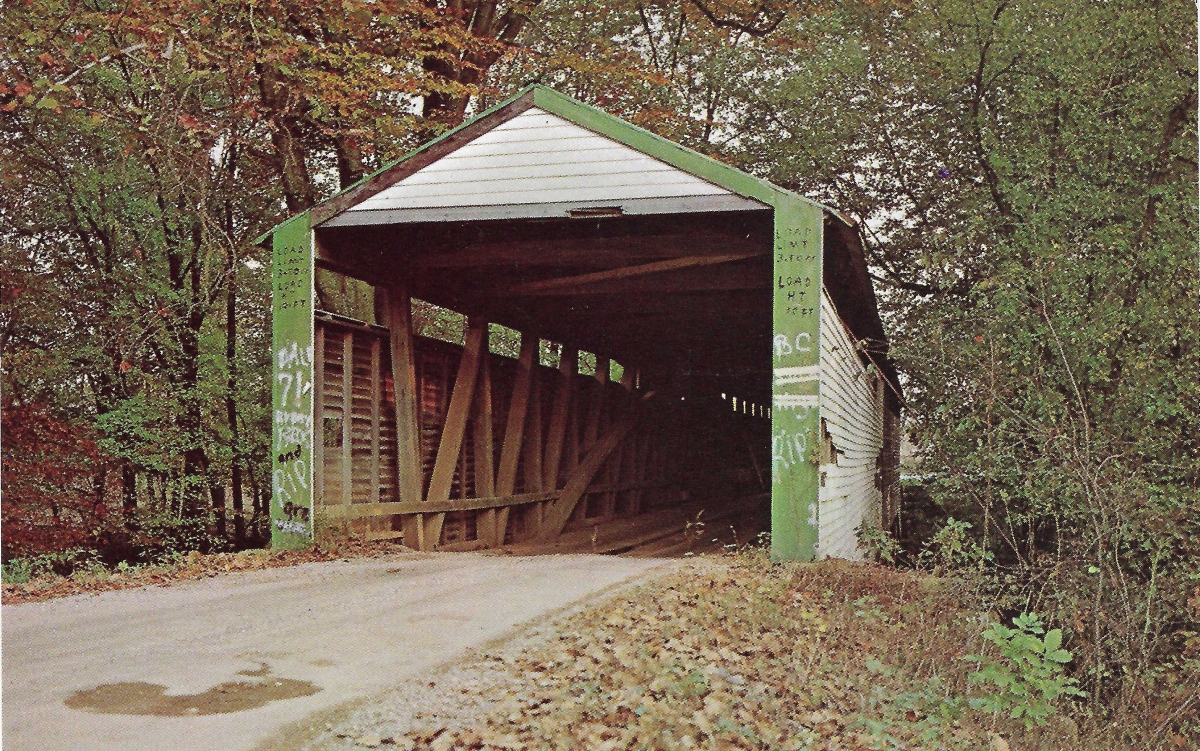
Huffman Mill Bridge, Anderson-Harrison, Perry & Spencer Counties, IN Built 1864
Bill Caswell Collection
|
Sources:
Ketcham, Bryan E.. Covered Bridges on the Byways of Indiana, 1949, page 27
Gould, George E.. Indiana's Covered Bridges Thru the Years, 1977
County History Preservation Society (no longer accessible). Covered Bridges of Indiana, 2002, http://www.countyhistory.com/coveredbridge/perry5.htm
Travis, Dale. 'Indiana Covered Bridges List', updated to 11 Feb 2005, http://www.dalejtravis.com/cblist/cbin.htm (8 Mar 2005)
National Society for the Preservation of Covered Bridges. World Guide to Covered Bridges, 2021, page 26 |